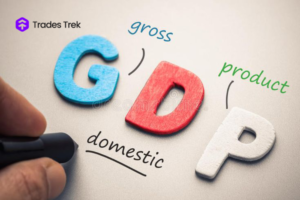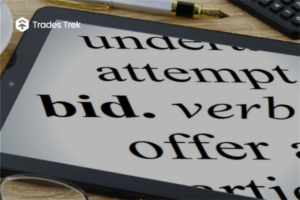You proceed to open a brokerage account to begin trading after choosing an online broker who is ideal for your investing requirements.
Knowing the type of order to buy when you’ve finally decided on the shares you want to purchase is how to gain control of your investment in the stock market. We can’t control certain parts of investing, so let’s concentrate on the aspects that we can, which, if mastered, would produce excellent profits.
The wrong type of order will cause you to lose money when entering or exiting a trade, which is counter to your investment goals. You must know what kind of order to use to exit or enter a trade. The purpose of investing is for every investor to have control over their money, and one surefire method to do so is to understand what type of order to place at each stage of the investment process.
Let’s start by understanding what an investment order means, shall we?
What is an Investment Order?
It’s simply letting the stockbroker know when, how, and at what price to purchase or sell your stock. An innovative strategy to gain control of your investments and steadily build wealth is understanding investment order and how it functions.
Let’s examine the various order types and how you can gain control of your investment by selecting the one that most closely matches your investment goals.

Market Order
The most frequent form of order involves quick stock purchases and sales. A market order will buy the stock at whatever price between when you hit the buy or sell button and when the trade is performed. In a market order, every second counts because prices are continually changing and either falling or rising.
Although your broker could rapidly execute it at any price available, a market order isn’t a great approach to gain control of your investment, especially for long-term investors, as you’ll purchase or sell your stock at any available price. In addition, the order’s size, nature, and time of placement affect the price the investor receives at the close of the transaction.
In addition, the order’s size, nature, and time of placement affect the price the investor receives at the close of the transaction. For instance, if investor ABC makes an order to buy 70 shares of a corporation, the transaction will likely be completed fast since there are fewer shares to be purchased at the current market price. This may not be the case if investor ABC trades larger shares, which will take longer to fill.
A market order is an option if:
- Regardless of the price you are trading, you want to complete the transaction as soon as possible.
- A few shares are being traded.
- You want to ensure you don’t lose out on an opportunity to buy or sell a stock.
Limit Order
With this kind of order, you can control the investment price better. By placing a limit order, you are merely indicating that you want to purchase shares but that there is a maximum price you are prepared to pay. The broker won’t execute the trade if it moves to or below the price. For example, if a stock sells for 10,000 NGN and you place a limit order at 5,000 NGN, this says, “5,000 NGN is the utmost amount I’m willing to pay.”
But, when you sell, you promise not to do so below a specific price. To sell a stock for 17,000 NGN, for instance, you put a limit order. The trade won’t go through unless it reaches or exceeds the limit. Purchasing or selling at a price guaranteed to be higher than or equal to the maximum price or slightly lower than or equal to the minimum price allows you to maintain control over your investment.
When employing the limit order type, you’ll gain control over your investment if:
- To limit your loss, you are purchasing a stock that isn’t widely traded and whose price changes quickly.
- A slight price movement might have a significant impact when dealing with a large number of shares.
Stop-loss Order
Here, you wait until a specific time before investing in a stock because you want to be sure of the direction the stock is going, so you watch for it to begin moving higher. If, for example, you believe that the price of 5,000 NGN will increase, the order will become a market order and be filled at the going rate. Using a stop-loss order is advised if you wish to guard against financial loss if the stock price drops, preventing a potential loss and maintaining complete control over your investment.
For instance, if you are purchasing stocks trading for 5,000 NGN and, for whatever reason, the stock price begins to fall, you want to get out at 4,500 NGN. Therefore you would set your stop-loss order at that price. When it drops to 4,500 NGN, it changes to a market order and is sold at the next available price. In this situation, trading with a stop loss order at 4,500 NGN and taking a slight loss is preferable to holding onto the asset while the potential price falls.
As an investor, the stop-loss order is your most excellent option if you want to maximize profit. Another situation where a stop-loss order is valid is when you buy a stock at a reasonable price, which has gone significantly up. Still, you’re not sure how much higher it can go before it starts dropping, and you don’t want to lose out on the profit you’ve already made. In this case, you set up a stop-loss order slightly below the current prices so that if it starts dropping, you’ll get back the profits you’ve made.
Stop-Limit Order
This type of order combines a limit order with a stop loss. In this type of order, you wait for the price to increase; once it does, it will set off a limit order that you may use to buy later when the price begins to decline. Investors’ power over the price at which the order is executed distinguishes this sort of order from others.
Let’s say the price is 8,000 NGN, you wait to make sure it’s trending upwards, and you set your stop order at 18 000 NGN to ensure it’s trending upwards. Since you don’t want to pay the 18,000, you placed the limit order for 16,000 NGN so that it falls a little lower and the price pulls back a little, and you’ll then get it at a slightly lower price than your target price.
When you sell using a stop limit order, the price will automatically start moving toward the limit price once it reaches the price you’ve selected as your stop.
For instance, if you set your stop price at 15,000 NGN and your limit at 14,000 NGN, the stock is sold if the price falls to that level, which in this case would be 14,000 NGN.
Conclusion
The degree to which you control your investment depends on how well your order type matches your trading strategy and how well you use the correct order type in each situation. Utilizing market orders is restrictive; instead, you should learn about all the different order types to gain power and save time by not constantly monitoring market activity.
Also, before choosing an online broker, it is crucial to verify the order types that the broker supports and the fees associated with it. The best way to approach the stock market is with the attitude that you can always manage your investments.




